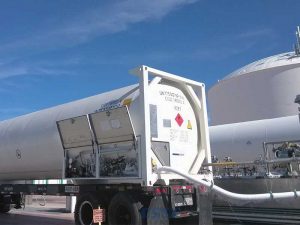
LNG Storage Tanks, Vaporizers, ISO Tanks, Mini LNG Plants, etc.
LNG equipment refers to the specialized equipment and infrastructure used in the liquefied natural gas (LNG) industry to facilitate the production, storage, transportation, and use of LNG. Some examples of LNG equipment include:
- LNG liquefaction plants – These facilities convert natural gas into LNG by cooling and condensing the gas to its liquid state.
- LNG storage tanks – These tanks are used to store LNG at very low temperatures and high pressures, typically in insulated tanks made of steel or concrete.
- LNG ISO Containers – These ISO Tanks are used to transport LNG by trucks, railways and or by standard container carriers or dedicated vessels.
- LNG carriers – These specialized ships are designed to transport LNG over long distances, and are equipped with advanced safety systems to prevent leaks or accidents.
- Regasification plants – These facilities convert LNG back into its gaseous form, which can then be transported through pipelines or used directly for power generation.
- LNG fueling stations – These stations are used to refuel LNG-powered vehicles or equipment, and typically include specialized dispensers and storage tanks.
- Vaporizers – These devices are used to heat and convert LNG back into its gaseous form, typically for use in heating or power generation applications.
- Transfer hoses and arms – These specialized equipment are used to safely transfer LNG between storage tanks or carriers, and typically include safety features such as emergency shut-off valves and vapor recovery systems.
Overall, LNG equipment plays a critical role in the production, storage, transportation, and use of LNG, and requires specialized engineering and safety features to ensure the safe and efficient handling of this valuable energy resource.
